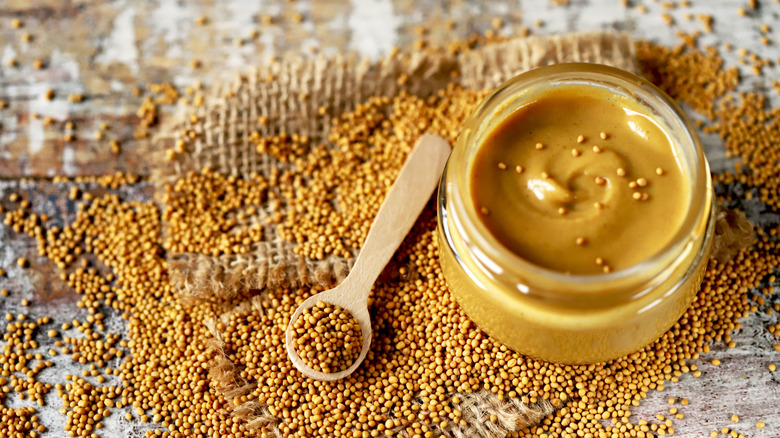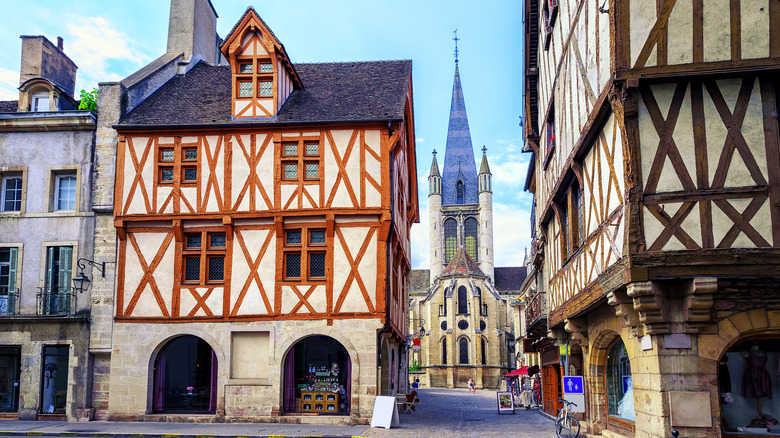The French Origins Of Dijon Mustard
Dijon mustard always felt like the fanciest mustard for some reason, so it should be no surprise to learn it originates from France. That's not to say Dijon is better than other mustards; everyone has their tastes, but compared to yellow mustard or a spicy brown, Dijon has always carried an air of refinement and complexity. Honey mustard is the party crowd-pleaser, and whole grain mustard is the rustic workman, but Dijon is as cosmopolitan at home in a vinaigrette as it is atop a sausage. Maybe Grey Poupon's advertising just worked too well on us, but more likely, it's Dijon's unique flavor, which Real Simple notes has a much spicier and sharp kick than other mustards. Compared to its more mild siblings, the sinus-clearing spice takes more of a mustard appreciator to love.
By most culinary standards, mustard is an ancient condiment. Before it was made in France, it was grown and used as a spice in Egypt and the ancient Middle East, dating back to almost 3000 B.C. According to The Spruce Eats, the Romans adopted the spice and made it into a paste, not unlike the bottled mustards we enjoy today. Its modern name comes from the Latin term for "burning must," a reference to its spicy taste and the ingredients used to produce it. In fact, "must" references a specific food product that has much to do with the beginnings of Dijon mustard in France.
Dijon mustard was first made in Burgundy
When you think of Burgundy you probably think of its world-famous wine, and the region's wine is part of the reason Dijon mustard was born. According to BBC World's Table, mustard-making became an industry in France's wine regions because mustard seeds provide essential nutrients to grapevines, so they were planted as a complementary crop. As Paris Unlocked reports, the condiment was then produced in these areas by mixing mustard seeds with wine must, a wine byproduct. The Dukes of Burgundy, where Dijon is located, were big sponsors of mustard, once serving a purported 70 gallons at a feast in 1336.
Still, it took 500 more years for true Dijon mustard to be born. Mustard was made in a variety of ways around France, and over time, vinegar replaced grape must as the common additive. Then in 1856, MyRecipes states that a citizen of Dijon named Jean Naigeon started using yet another wine product, verjus, in place of vinegar, which gives Dijon mustard its unique heat. A decade later, Grey Poupon was founded, taking advantage of newly available steam power to produce Dijon mustard on an industrial scale (via Great British Chefs). The new brand, and mustard style, took over France before moving on to global recognition. Today the ingredients can vary, but most brands still use white wine products to give Dijon its special flavor. It turns out Dijon really is the fanciest mustard, after all.

